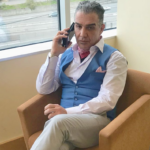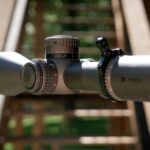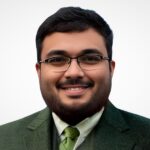By: Nic Abelian
From June 10 to June 12, the Jacob Javits Convention Center in New York City hosted the annual MD&M East conference, a pivotal event in the field of medical technology. The conference brought together leading engineers, developers, and investors to discuss innovations that are reshaping modern healthcare. Among the notable attendees was Nurlan Maratuly, a medical equipment engineer at General Electric and a well-regarded expert in healthcare technology.
The event highlighted advancements in robotic surgical systems, AI-powered diagnostics, portable health-monitoring devices, and 3D printing for personalized medicine. These innovations emphasize New York’s role as a hub for medical technology, with MD&M East serving as a platform for industry leaders to explore the potential of these developments.
Nurlan Maratuly provided noteworthy insights into these technological breakthroughs, emphasizing their implications for healthcare accessibility, efficiency, and patient outcomes.
The integration of robotic surgical systems was a focal point of the exhibition. In a live demonstration, a robotic arm performed a precise incision under the guidance of a surgeon using a virtual interface. Reflecting on this demonstration, Maratuly stated, “This isn’t about replacing humans with machines. Robots are tools that make a surgeon’s hands more precise. These systems may help reduce surgical times significantly, potentially leading to less anesthesia, fewer complications, and faster recovery for patients.”
Despite their promise, Maratuly acknowledged the challenges of widespread implementation. The cost of such systems and the need for specialized training present hurdles, but he remains cautiously optimistic about their adoption in high-tier clinics and hospitals across the United States.
Another standout innovation showcased at MD&M East was portable health-monitoring devices. These compact devices, ranging from smart bracelets to coin-sized sensors, provide real-time data on blood pressure, glucose levels, and heart rates, transmitting this information directly to physicians.
“Just a few years ago, this felt like science fiction, but today it’s a reality,” said Maratuly. He highlighted a coin-sized device capable of detecting heart rhythm abnormalities before symptoms appear, a tool that could potentially save countless lives. He also pointed out the benefits for patients in remote areas and those managing chronic conditions. “For a fast-paced city like New York, these devices might become commonplace within the next three to four years,” he added.
The use of 3D printing in medical technology drew significant attention at the exhibition. The technology’s ability to create customized implants and prosthetics that match a patient’s anatomy is revolutionizing the field of personalized medicine.
“Patients used to wait months for a suitable implant. Today, thanks to 3D printing, we can produce one in a matter of days,” Maratuly explained. He cited an example of reconstructing a patient’s bone structure after a severe fracture, describing it as a significant advancement that could offer tailored solutions for individual patients.
Artificial intelligence also featured prominently at MD&M East, particularly in the realm of medical diagnostics. AI systems demonstrated their ability to analyze scans with exceptional speed and accuracy, often outperforming traditional diagnostic methods.
“AI doesn’t get tired or make fatigue-related errors,” said Maratuly. “It won’t replace doctors, but it will become their premier assistant.” He shared an example where an AI system detected a microscopic abnormality in a medical scan within seconds, an achievement that could have otherwise been overlooked by experienced specialists.
When asked about the timeline for these technologies to become mainstream, Maratuly emphasized their current and ongoing integration. “Some are already here. Robotic surgical systems are operational in leading hospitals, and millions of people are using portable devices. The next step is making these technologies more widely accessible,” he noted.
Maratuly underscored the importance of education in driving this progress. “Technology is just one piece of the puzzle. Preparing specialists who can implement and maintain these systems is what drives real progress,” he said.
Maratuly’s contributions to the field extend beyond technological innovation. During the COVID-19 pandemic, he played a critical role in deploying ventilators under immense pressure, ensuring their operational efficiency in hospitals worldwide. He continues to mentor young engineers, shaping the next generation of healthcare technology experts.
“Behind every machine, there’s an engineer. And behind every perfectly working device, there’s a life saved,” Maratuly reflected.
The MD&M East conference illustrated a new era in healthcare, one marked by precision, speed, and accessibility. As New York City solidifies its position as a hub for medical innovation, professionals like Nurlan Maratuly are bridging the gap between cutting-edge technology and practical application, ensuring these advancements benefit patients around the world.
For further information and updates, visit Facebook.
Published by Iris S.



















